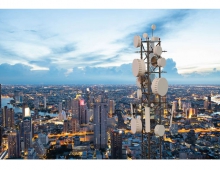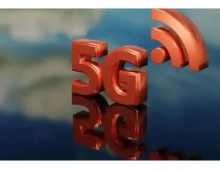
Fujitsu Doubles Same-Cell Wireless Communication Capacity for 5G
Fujitsu has developed a new wireless technology that doubles the capacity of a single cell, using the same wireless frequency simultaneously, as a step toward 5G. Targeting the commercial launch around 2020, 5G, the next-generation wireless communication system, is currently being researched and developed to fulfil the explosion in communication volumes caused by the popularity of smartphones, and to support the expected future proliferation of services.
It is estimated that wireless communication capacity will need to be 1,000 times greater in 2020 than in 2010. To satisfy this, the 5G system uses small cell technology for which research and development are already under way. In small cell technology, the area covered by a given base station is narrower and a given frequency is used in different areas, both of which lead to increased capacity.
Full-duplex is a technology that simultaneously transmits and receives wireless signals on the same frequency, which is a way to increase wireless communication capacity, but reducing interference from the sending signal to the receiving signal is problematic.
Fujitsu says it has developed a new scheduling technology that reduces the inter-device and inter-base-station interference, using a transceiver separation type where separate base stations are responsible for the tasks of sending and receiving to multiple devices within the same cell. This results in a communication capacity of up to double the current existing half-duplex communication technology within a single small cell. In wireless environments with a high concentration of users, such as shopping malls or stadiums, it is anticipated that this will result in a smoother communication environment that reduces capacity loss.
Details of this technology are being presented by the Fujitsu R&D Center at the Vehicular Technology Conference 2015 (VTC2015-Fall), opening Sunday, September 6 in Boston, United States.
Fujitsu R&D Center plans to continue its work to further reduce the communication capacity degradation caused by interference between small-cell base stations and macro-cell base stations within this transceiver separation type full-duplex communication technology. Fujitsu Laboratories, meanwhile, will continue its investigation of the architecture and its efforts at developing deployment technology as part of its proposal for inclusion in the 5G standard, aiming for implementation of this technology around 2023.





















